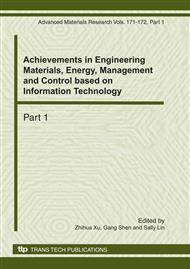p.333
p.337
p.342
p.346
p.350
p.354
p.358
p.364
p.368
Analysis of Exergy Utilization Efficiency of Combined Cooling Heating & Power on Gas Engine-Driven Heat Pump System
Abstract:
The exergy utilization efficiency is the better reasonable to measure quantity and quality of thermal system then energy utilization efficiency .This text analyzed the exergy utilization efficiency of gas engine-driven heat pump(GEHP) at different combined supply energy modes. . Simulation computes gives that the heat recover plays the important action for increases exergy utilization efficiency of GHP system, especially at combined heating and electricity operational models, and the rules of heat recollection ratio and heat recollection temperature to exergy utilization efficiency of CHCP system were provided.
Info:
Periodical:
Pages:
350-353
Citation:
Online since:
December 2010
Keywords:
Price:
Сopyright:
© 2011 Trans Tech Publications Ltd. All Rights Reserved
Share:
Citation:


